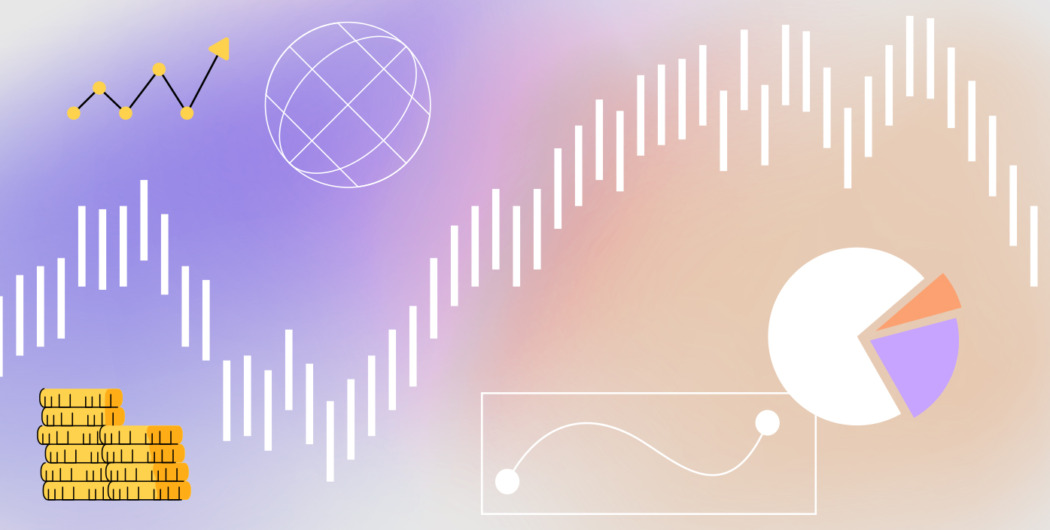

If you learned how to use RSI, MACD, or Stochastic indicators, you know that divergence is one of their signals. It doesn’t require specific calculation and is simply recognized on the price chart. However, not every divergence signal leads to a successful trade. Why is it like that, and how to confirm a divergence signal to enter a good position? Let’s find out together.
Divergence: Fundamentals
Divergence is a market condition in which the price moves in one direction, and the indicator moves contrary. To define a divergence, traders use momentum indicators, including RSI, MACD, Stochastic, or Awesome Oscillator.
The indicators are called momentum because the rules behind price moves resemble the ones used to measure speed, acceleration, and momentum.
What is divergence?
Divergence happens when the indicator and the piece are telling the trader two different things. In other words, it’s when a currency price movement is going in the other direction than what the technical indicator suggests. This is often a warning side that the price may be weakening, sometimes leading to a change of direction for the price.
Generally, it is assumed that if you have equal rates, the indicators and currency prices will go in the same direction. As an example, if the prices are going higher, the indicator is supposed to follow. The same thing applies if it’s going lower.
That being said, if the indicators don’t match, then traders may take it as a sign that something is about to happen. It uses the related indicators along with the high and low prices to suggest a change in the market. This way, a trader may get a signal of whether they should buy or sell.
The divergence strategy is not used that often. However, if used carefully, it can turn out to be quite profitable. At the same time, even if they are great trading signals, it doesn’t always mean that there will be a trend reversal. It merely informs that there is a potential for it.
Divergences can be present for a very long time, without any signs of a price reversal. This is why they should be used together with other technical indicators. It takes a fair amount of research on the market and experience to predict a reversal based on the divergence.
Regular and hidden divergence
There are two types of divergence — regular and hidden. The regular divergence signals a price reversal, while the hidden divergence confirms a trend. Both can be found in bullish and bearish trends.
A regular bullish divergence occurs when the price forms lower lows, but the oscillator increases, creating higher minimums. This means that bears are losing their strength. Therefore, the price will turn up soon. You can open a long position as soon as the divergence occurs.
A regular bearish divergence appears when the price forms higher highs, but the oscillator moves down, creating lower maximums. The oscillator shows that bulls are weakening, and the price will turn down quickly. You can open a short trade as soon as the divergence appears.
A hidden bullish divergence is a situation in which the price forms higher lows, but the indicator declines, creating lower minimums. It’s a sign that the price will continue moving in the uptrend. You can keep your trade or open a new one in the trend direction.
A hidden bearish divergence is a situation in which the price goes down, forming lower highs, but the indicator rises, creating higher maximums. It’s a signal that the price will keep moving in the downtrend. You can keep your trade open or enter the market in the trend direction.
You may be confused with all these highs and lows. This rule will help you identify a divergence on the price chart: in a bullish trend, look at lows; in a bearish trend, look at highs.

How to confirm a divergence?
Divergence, especially regular ones, provides reliable signals. Still, there are some rules you should keep in mind when using its signals to enter or exit the market.
- Divergence works better on longer-term timeframes. Oscillators usually provide lagging signals. It means that it takes some time for a divergence to appear. If you use short-term timeframes, you risk entering or exiting the market with a delay.
- Divergence doesn’t predict a trend reversal. It’s vital to understand that the divergence alarms the price reversal. However, the reversal may occur within a strong trend. Thus, it will continue until the price touches a strong boundary.
- Pay attention to regular divergence. It’s worth saying that the regular divergence provides stronger signals than a hidden one.
- Always confirm a signal. There can be a situation when there is a regular divergence, but the price moves in the same direction. It’s best to check where the price is located on higher timeframes. For instance, if you find a regular bullish divergence on a 4-hour chart, you should open a daily chart and determine whether the price is near a strong support level. If yes, you can open a buy position. If not, it’s better to skip this signal.
- Look for other signals. After you enter the market on the divergence signal, you should find a point to close a trade. As it was mentioned above, the divergence may continue for a short period. Thus, draw the closest support/resistance levels on the timeframe you trade on and implement other indicators that can predict a price reversal.
Takeaway
Divergence signals are very reliable. Many traders prefer them over standard oscillator signals, including overbought/oversold locations. Still, don’t rely even on solid signs blindly; make sure to confirm every signal.







